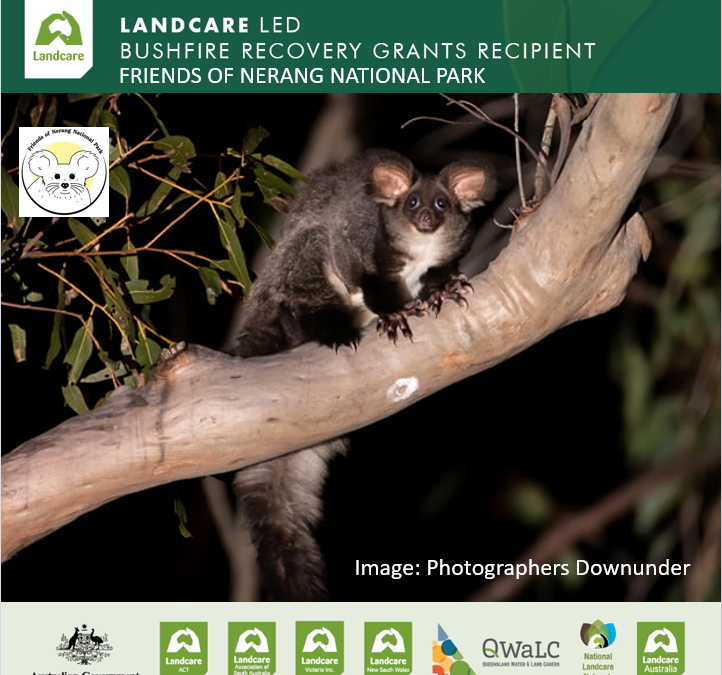Friends of Nerang National Park
Friends of Nerang National Park have used $32,000 from the Landcare Led Bushfire Recovery Program to mitigate loss of hollows for the Greater Gliders in Nerang National Park.
Greater gliders (Petauroides volans) are one of the Gold Coast’s lesser-known inhabitants. Despite their conservation status listing as “Endangered” in Queensland and “Vulnerable” at federal level, these nocturnal animals are often overlooked. Once more widespread across the Gold Coast, the stronghold for greater gliders in the central Gold Coast region is Nerang National Park as it is protected from development and a haven for wildlife.
Greater gliders share a similar habitat to their more famous marsupial counterparts, the koala. Like the koala, Greater gliders feed predominantly on eucalyptus leaves and prefer eucalyptus forests with a number of undisturbed large hollow-bearing trees that they use for nesting and breeding sites. This critical habitat is threatened by land clearing and bushfires. During the devastating bushfires of 2019-2020, over 30% of the Greater glider habitat was burned along the East Coast of Australia.
To mitigate some of this loss, the group has installed 50 artificial hollows for these adorable creatures throughout Nerang National Park. Using a newly developed, cutting-edge style of 3D printed artificial hollows developed by researchers at Charles Sturt University. The artificial hollows from Habitech Pty Ltd are better insulated than traditional wooden nest boxes, making them more robust to increasing temperatures as a result of climate change. These artificial hollows are expected to last for decades, enabling them to support greater glider populations in Nerang National Park for years to come.
Jessica Lovegrove-Walsh, Project Officer said “Greater gliders are still mostly unknown to the wider community and are at risk of a “silent extinction” if habitat loss continues. Nerang National Park has received a boost in greater glider habitat and community education thanks to the installation of 50 artificial hollows”.
Two workshops have been held to teach the community how to spot nocturnal fauna, particularly Greater gliders, and how to report any sightings. These workshops attracted 60 attendees who have now been trained in threatened fauna spotting. The project has also raised awareness of Greater gliders and the threats they’re facing.
Twenty Greater glider surveys have resulted in a current understanding of where Greater gliders are in Nerang National Park. These surveys have inspired and skilled the community to look for nocturnal animals outside of Nerang National Park, which will help threatened species around South-East Queensland. https://www.facebook.com/nerangnationalpark

